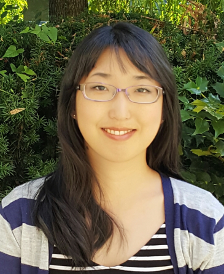Sehee Na
|
|
Understanding ionic transport through the gramicidin ion channel using MD and TI methods
Principal investigator: Prof. Dr. Thorsten Koslowski |
Abstract
With the crystal structures of membrane proteins becoming available and an increasing computer power, classical molecular dynamics simulations have contributed to a qualitative understanding and to the quantitative computation of transfer rates of ion channels. With typical transfer rates of the order of 106 to 108 s-1, however, the number of events is too small to form the basis of a proper statistical analysis or to observe any event at all. Hence, the computation of potentials of mean force (or free energy landscapes) as a function of a small set of effective coordinates has become the standard tool to determine an approximate free energy surface for ion transfer. Based on the characteristic free energies of the transfer process, rate equations can be formulated to estimate the overall turnover. Computations are limited to x-ray or NMR structures available, thus the gramicidin dimer and other comparatively simple alkali metal ion transport channels form the majority of the objects of MD studies. In this project, we wish to advance the method of thermodynamic integration (TI) and apply it to ion-conducting channels of increasing complexity. Furthermore, some part of examples would be gained from other research group of RTG 2202 and we expect cooperation within RTG 2202 to investigate additional aspect of membrane protein channel, e.g. the impact of different lipid environments.
Methods
Molecular Dynamic (MD) Simulation, Thermodynamic Integration (TI), Umbrella Sampling, Monte Carlo Simulation
Publications
Na, S, Bauß, A, Langenmaier, M, Koslowski, T (2017) Thermodynamic Integration Network Study of Electron Transfer: from Proteins to Aggregates, PCCP, 19, 18938.




